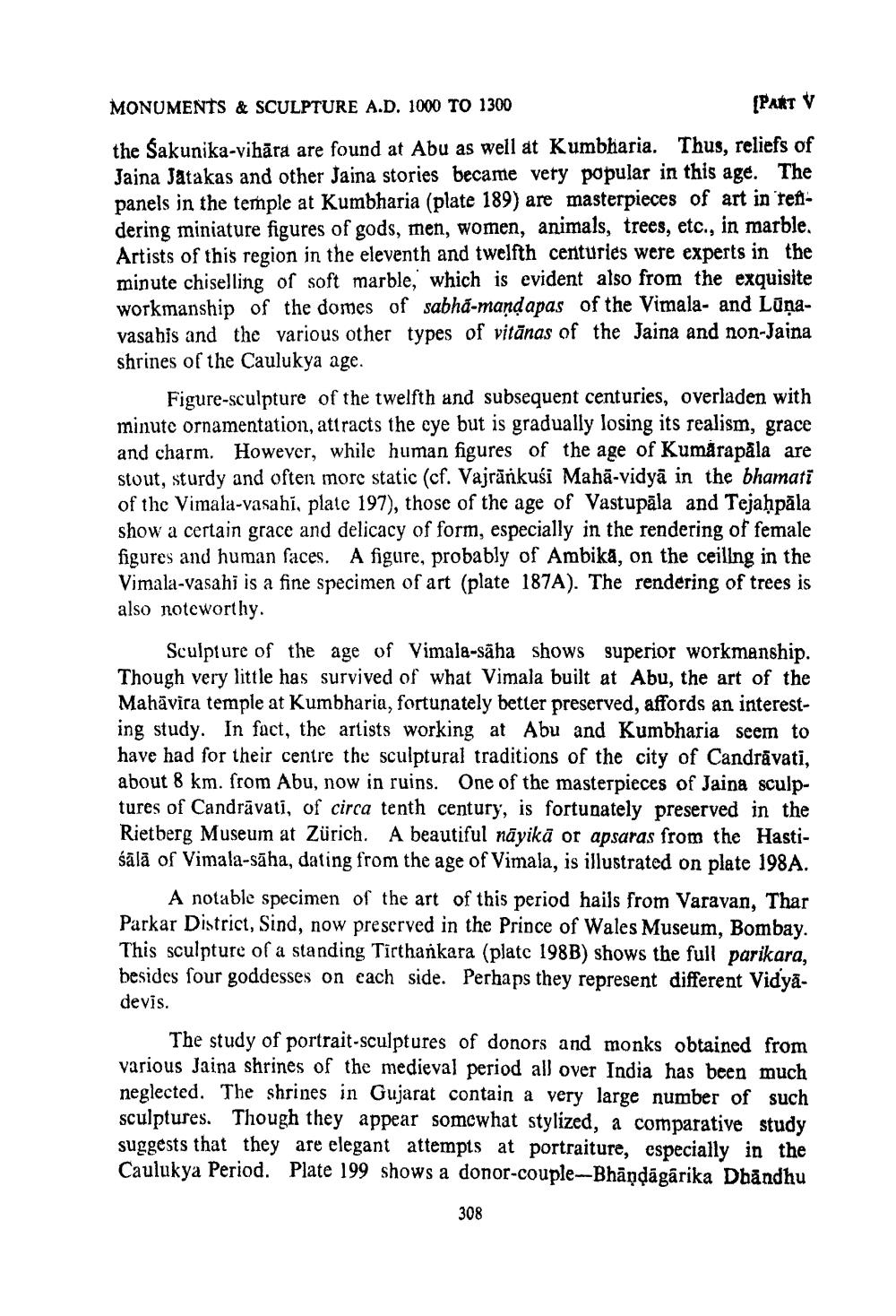________________
MONUMENTS & SCULPTURE A.D. 1000 TO 1300
(PART V
the Sakunika-vihāra are found at Abu as well at Kumbharia. Thus, reliefs of Jaina Jatakas and other Jaina stories became very popular in this age. The panels in the temple at Kumbharia (plate 189) are masterpieces of art in 'ret. dering miniature figures of gods, men, women, animals, trees, etc., in marble. Artists of this region in the eleventh and twelfth centuries were experts in the minute chiselling of soft marble, which is evident also from the exquisite workmanship of the domes of sabha-mandapas of the Vimala- and Lūnavasahis and the various other types of vitānas of the Jaina and non-Jaina shrines of the Caulukya age.
Figure-sculpture of the twelfth and subsequent centuries, overladen with minute ornamentation, attracts the eye but is gradually losing its realism, grace and charm. However, while human figures of the age of Kumarapala are stout, sturdy and often more static (cf. Vajränkusi Mahā-vidyā in the bhamati of the Vimala-vasahi, plate 197), those of the age of Vastupāla and Tejahpāla show a certain grace and delicacy of form, especially in the rendering of female figures and human faces. A figure, probably of Ambika, on the ceiling in the Vimala-vasahi is a fine specimen of art (plate 187A). The rendering of trees is also noteworthy.
Sculpture of the age of Vimala-säha shows superior workmanship. Though very little has survived of what Vimala built at Abu, the art of the Mahāvira temple at Kumbharia, fortunately better preserved, affords an interesting study. In fact, the artists working at Abu and Kumbharia seem to have had for their centre the sculptural traditions of the city of Candrāvati, about 8 km. from Abu, now in ruins. One of the masterpieces of Jaina sculptures of Candrāvati, of circa tenth century, is fortunately preserved in the Rietberg Museum at Zürich. A beautiful nāyikā or apsaras from the Hastiśālā of Vimala-säha, dating from the age of Vimala, is illustrated on plate 198A.
A notable specimen of the art of this period hails from Varavan, Thar Parkar District, Sind, now preserved in the Prince of Wales Museum, Bombay. This sculpture of a standing Tirthankara (plate 198B) shows the full parikara, besides four goddesses on each side. Perhaps they represent different Vidyadevis.
The study of portrait-sculptures of donors and monks obtained from various Jaina shrines of the medieval period all over India has been much neglected. The shrines in Gujarat contain a very large number of such sculptures. Though they appear somewhat stylized, a comparative study suggests that they are elegant attempts at portraiture, especially in the Caulukya Period. Plate 199 shows a donor-couple-Bhändāgārika Dhandhu
308




